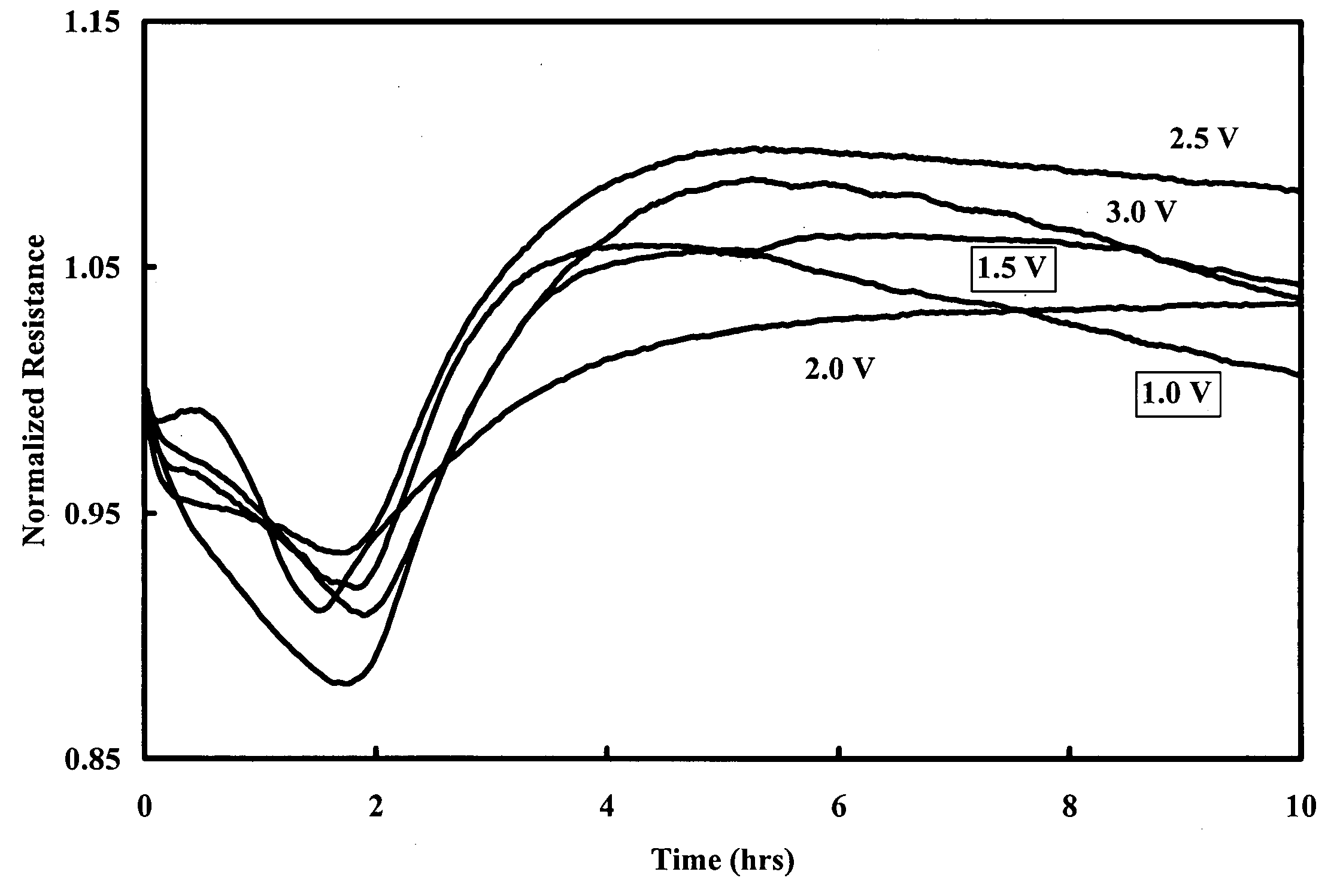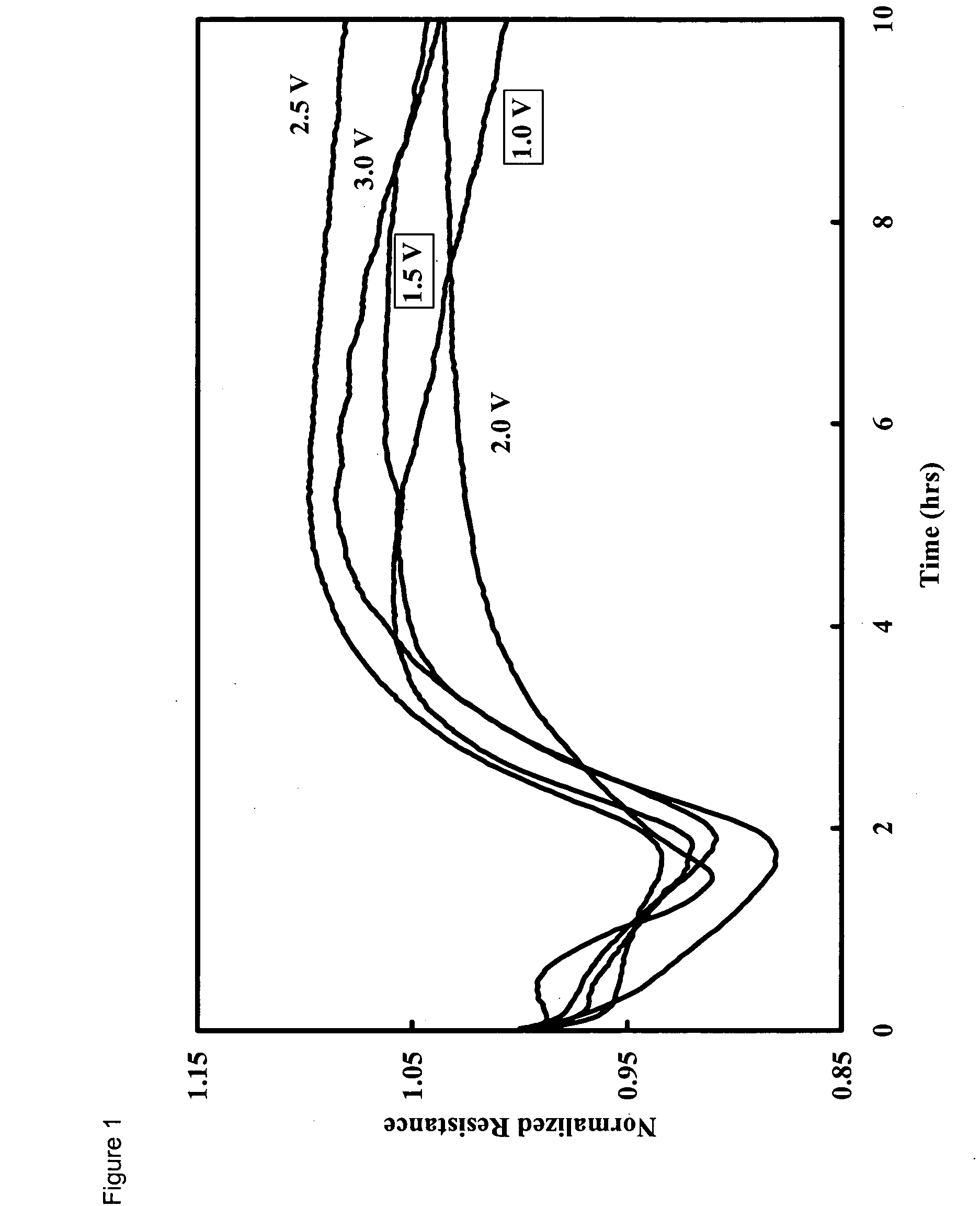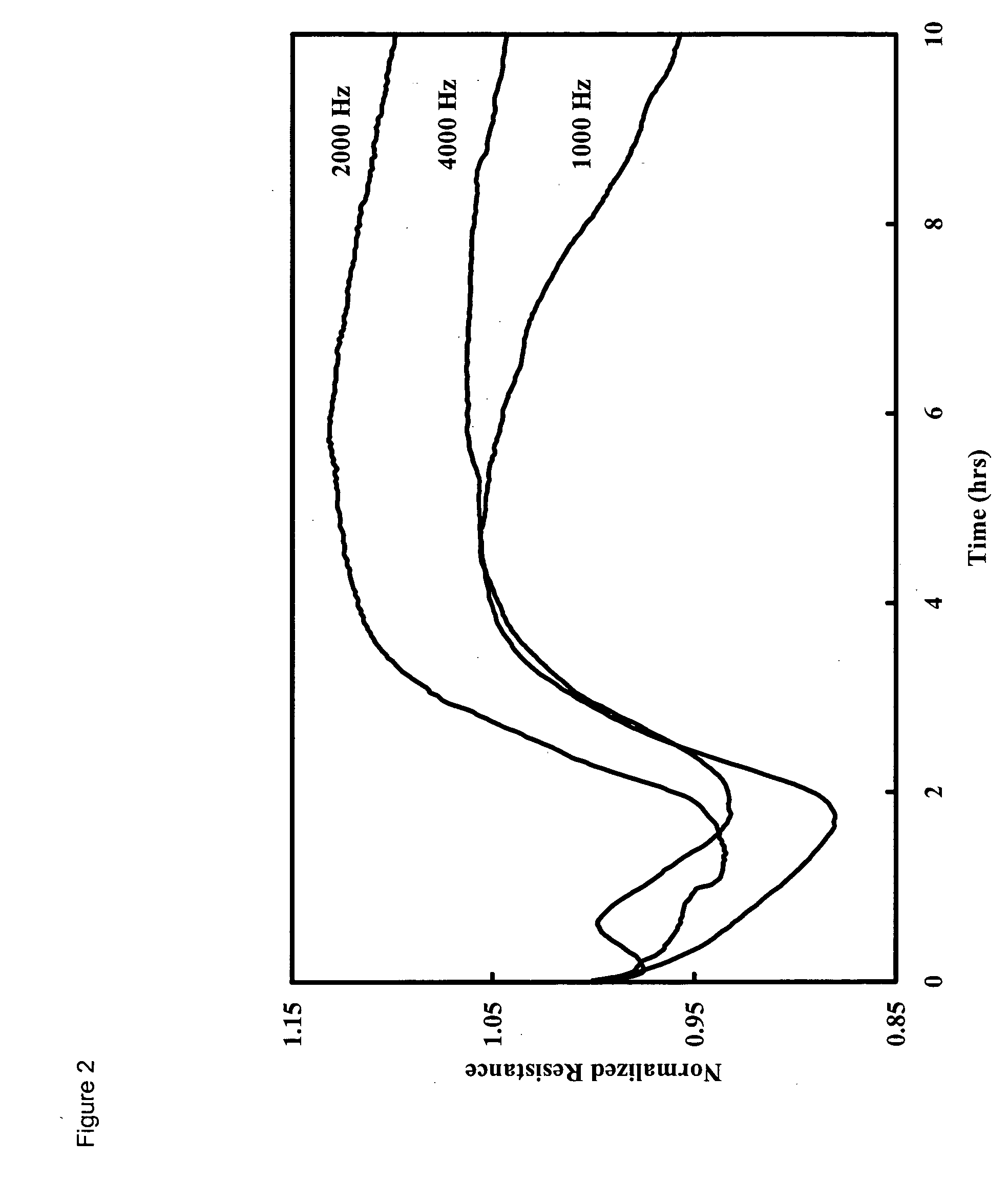Method and apparatus for the detection of microorganisms
a microorganism and detection method technology, applied in the field of microorganism detection, can solve the problems of detection limits, time-consuming and/or costly, and the elisa technique is rather time-consuming and/or costly, and achieve the effect of increasing the first impedan
- Summary
- Abstract
- Description
- Claims
- Application Information
AI Technical Summary
Benefits of technology
Problems solved by technology
Method used
Image
Examples
example i
Preparation of the Phases
[0058] Polyclonal antibodies and biotinylated antibodies to E. coli K91 were purchased from Fitzgerald Industries International (Concord, Mass.) and Biodesign International (Saco ME). E. coli K91 was obtained from ATCC and grown in LB broth.
[0059] Phages specific to E. coli K91 (Biophage Pharma Inc, Montreal, Quebec, Canada) were produced in the range of 1010-1012 phages / mL by an amplification procedure using E. coli K91 as the host. The multiplicity of infection (MOI) used for the initial infection was 1 phage / 100 bacteria. A mixture of 105 phages and 107 bacteria was incubated for 15 min to optimize the initial infection before the mixture (1-2 mL) was added to 250 mL of LB broth. After 3.5 h at 37° C., the resulting culture was centrifuged at 3,500 rpm for 20 min to remove cell debris and cells; then the supernatant was filtered with a 0.22 μm syringe filter. The filtrate was purified by polyethylene glycol (PEG-8,000) precipitation. After adding 1 M Na...
example ii
Standard Electrodes
[0060] The multiwell ECIS biosensor system (model 100, Applied Biophysics, Troy, N.Y., USA) has the capability of simultaneous measurements up to 16 individual cultures. Both data acquisition and processing were performed using software supplied by Applied Biophysics. Each ECIS disposable electrode array consists of eight gold film electrodes (surface area: 0.5×10−3 cm2 or 250 μm in diameter) and delineated with insulating films with a much larger common counter electrode (surface area: 0.2 cm2) located at the base of 10-mm square wells (volume ˜0.5 mL). Custom arrays with 100 μm diameter gold electrode surfaces were also obtained from Applied Biophysics.
[0061] Antibodies directed against E. coli K91 (100 μg / mL-500 μg / mL) in HEPES buffer pH 7.4 were placed (0.25 mL) in the ECIS wells overnight (at room temperature) to allow for complete binding to the gold electrodes. The wells were extensively washed to remove unbound antibody. For biotinylated antibodies (100 ...
example iii
Modified Electrodes
[0069] Gold electrode surfaces were modified by electrodeposition of gold nanoparticles. A 10 mM solution of hydrogen tetrachloroaurate (III) trihydrate in 0.5 M sulfuric acid was placed into a well of the ECIS chip and then both an Ag / AgCl reference and a Pt counter electrode were placed in the well. A lead was connected to the pad of the chip corresponding to the detecting electrode position of interest. The applied potential to the electrode surface was decreased from 800 mV to 200 mV in 10 s to initiate the electrodeposition of the gold nanoparticles. The gold concentration and the applied potential time were varied to monitor the effect of these parameters. Atomic force microscopy (AFM) micrographs of the resulting gold nanoparticles on the gold electrode surface were obtained using a Nanoscope IV™ (Digital Instruments, Veeco, Santa Barbara, Calif.) with a silicon tip operated in tapping mode.
[0070] The modified surface was used to monitor impedance, capaci...
PUM
 Login to View More
Login to View More Abstract
Description
Claims
Application Information
 Login to View More
Login to View More - R&D
- Intellectual Property
- Life Sciences
- Materials
- Tech Scout
- Unparalleled Data Quality
- Higher Quality Content
- 60% Fewer Hallucinations
Browse by: Latest US Patents, China's latest patents, Technical Efficacy Thesaurus, Application Domain, Technology Topic, Popular Technical Reports.
© 2025 PatSnap. All rights reserved.Legal|Privacy policy|Modern Slavery Act Transparency Statement|Sitemap|About US| Contact US: help@patsnap.com



